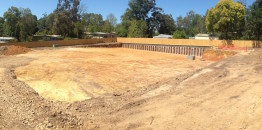 The kitchen has become the real heart and soul of the modern home so choosing what finishes and surfaces to have in your kitchen is a big decision. The two most common surfaces for kitchen bench tops are stone and laminate. Let’s take a look at the two and explore their benefits.
The kitchen has become the real heart and soul of the modern home so choosing what finishes and surfaces to have in your kitchen is a big decision. The two most common surfaces for kitchen bench tops are stone and laminate. Let’s take a look at the two and explore their benefits.
Since bench tops are the most used surfaces in a kitchen and set the tone for the entire area, choosing a bench top is an important decision. After all, you are investing in something that will not need replacing for more than 14 years (the average replacement age for bench tops, according to the Housing Industry Association).
Before choosing the type of material for the kitchen bench top, it is important to take some factors into consideration, including
• overall aesthetics
• durability of the surface
• maintenance requirements
• your budget
• ways you plan to use your bench top
Stone Bench Tops
Stone bench tops can add glamour and style and make a great statement piece to the kitchen and surrounding area. Easy to care and look after, stone countertops are classic, glamorous, luxurious, and beautiful, with a timeless appeal. Since stone is expensive, stone bench tops may be a more practical alternative in limited spaces. Being heat resistant, tough, and resilient, stone bench tops are great as a surface as they will undergo the most use and abuse in a kitchen.
With its timeless appeal, natural stone comes in a variety of styles, shades, features, and types, including sandstone, granite, marble, limestone, slate, travertine, and sandstone. A popular choice for kitchen counter tops and bench tops, natural stone absorbs stains and promises to be an affordable alternative for certain applications. Granite is the most popular natural stone bench top that does not require as much care as some other natural stone materials, including limestone, marble, and soapstone. Most of the natural stone bench tops require periodic sealing for longevity and durability, depending on their finish and use.
With the look and strength of natural stone, reconstituted or engineered stone offers great uniformity and functionality. Being nonporous, engineered stone does not require sealing, is easy to maintain, stain and scratch resistant, cheaper, and available in a range of colours compared to natural stone.
Laminated Bench Tops
Made using plastic-coated synthetics, high-pressure laminated surfaces are an attractive, versatile, and low maintenance option for kitchen counter tops and bench tops. Laminate is available in a variety of colours, textures, and designs and costs less than other materials used for kitchen bench tops, making it a great value for money. Easy to maintain, laminate is hard wearing, waterproof, and easily custom fitted, depending on your preferences and style.
Made from fusing together plastic with pressure, heat, and adhesive, laminate is nice and glossy. Non-porous and easy to maintain, laminate bench tops are scratch resistant and not immune to chipping, scarring, or scorching, thus making them a great addition to your kitchen. A cost-effective alternative, laminate bench top design patterns can easily mimic the look of stone surfaces.
So, it really comes down to your budget and how you plan to use your kitchen. If you plan to spend lots of time in the kitchen whipping up culinary masterpieces then stone may be the way to go. If the kitchen is a functional area where you quickly make meals and relax in the lounge then perhaps laminate may be your choice.
When buying any of our properties off the plan at our next development you will have the choice of kitchen surfaces. We are happy to discuss which option might be best for you.
What’s your preference? Stone or laminate and why? Share below.







{ 0 comments… add one }